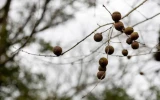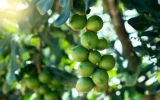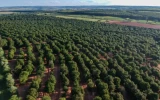Are Macadamia Trees Fast Growing? (How Fast)
Macadamia trees are medium to large-sized evergreen trees that can grow up to 40 feet tall and wide. To know how long it takes for them to grow as such, this article will help you explore the growth rate of macadamia trees and answer some common questions about their growth.
Macadamia trees are not fast-growing but are considered slow-growing crops, taking anywhere from 5 to 7 years to reach maturity. However, some varieties can take up to 10 years to mature. The time to maturity can also be affected by factors such as light, water, soil, temperature, fertilizer, and humidity.
Even though macadamia trees are not known for their fast growth rate, they are worth the wait. As you read the rest of the article, we will discuss the growth stages of macadamia trees, time to maturity, and factors affecting growth speed.
Understanding macadamia growth rates allows a new farmer to realistically plan and manage the various stages of orchard establishment and development for a successful farm.
Summary
- Macadamia integrifolia is a species prized for its relatively fast growth rate of 1–2 feet per year under favorable conditions, making it an economically attractive option for commercial growers.
- Macadamia tetraphylla, on the other hand, exhibits a slower growth rate, averaging 6–12 inches per year, but it is more well-suited for cooler climates.
- Macadamia trees are not fast-growing when grown in pots due to restricted root space and the need for regular maintenance
- Macadamia trees take 5 to 12 years to reach maturity and start producing nuts when grown from seed.
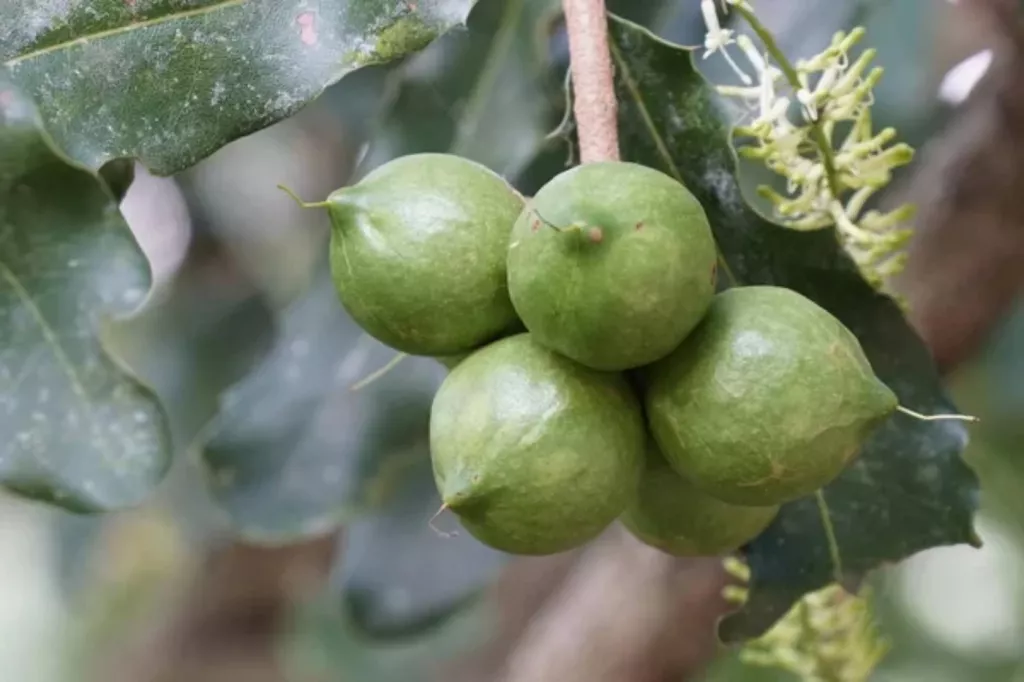
On this page:
Macadamia Tree Growth Rate
The table below shows the growth rate of different varieties of macadamia trees:
| Macadamia Tree | Estimated Growth Rate |
|---|---|
| Macadamia integrifolia | 1–2 feet per year |
| Macadamia tetraphylla | 6–12 inches per year |
Typically, macadamia trees take between 5 and 7 years to start producing nuts, which is why they are included as one of the fastest-growing nut trees compared to other trees. However, some varieties may take up to 10 years to bear a crop.
This extended timeline can be a challenge for growers who are eager to see a return on their investment, but the quality of the macadamia nuts and the longevity of the trees' productivity can make the wait worthwhile.
Under optimal growing conditions, some varieties have been known to exhibit a growth rate of 1 to 2 feet per year. However, these ideal conditions are not always present, and the growth rate can be influenced by variables such as the specific variety of the tree, the local climate, the composition of the soil, and the availability of water and sunlight.
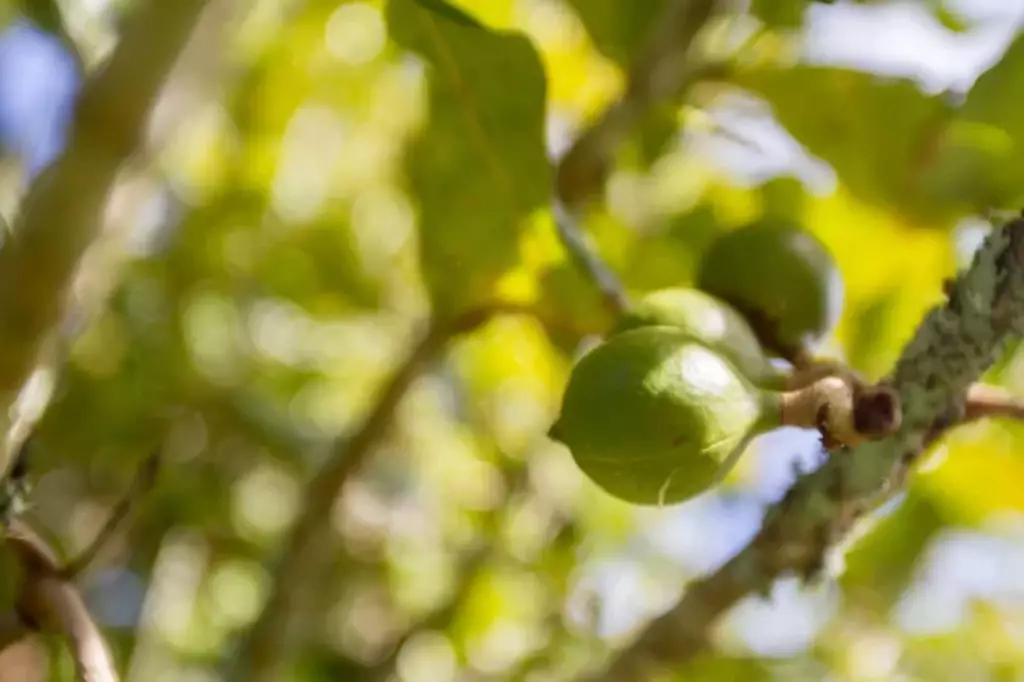
In regions with favorable conditions, macadamia trees can thrive and achieve their maximum growth potential more rapidly. However, in less hospitable environments, the growth rate may be slower, and the trees may take longer to mature and become productive.
Macadamia integrifolia has a relatively fast growth rate
Macadamia integrifolia, commonly known as the macadamia nut tree, is indeed a species renowned for its rapid growth rate, making it an appealing choice for commercial cultivation. There are several reasons why this species is favored for its growth characteristics:
They have a fast growth rate
Macadamia integrifolia is prized for its relatively fast growth rate, with the potential to grow at a rate of 1–2 feet per year under favorable conditions. This rapid growth allows for quicker establishment of orchards and earlier yields, making it an economically attractive option for commercial growers.
They thrive in subtropical climates
This species thrives in subtropical climates, where it can benefit from warm temperatures and ample sunlight. Subtropical regions provide the ideal environment for macadamia trees to flourish, promoting their vigorous growth and development.
They can reach impressive heights
At maturity, Macadamia integrifolia can reach an impressive height of 30–40 feet. This substantial size not only adds to the aesthetic appeal of the tree but also contributes to its productivity.
Taller trees have the potential to bear a larger quantity of nuts, making them a desirable choice for those seeking high yields.
Macadamia tetraphylla exhibits a slower growth rate
Macadamia tetraphylla is characterized by several distinct growth characteristics that make it well-suited for specific environmental conditions:
They exhibit a slower growth rate
Macadamia tetraphylla typically has a slower growth rate, averaging 6–12 inches per year. This slower growth pattern allows the tree to develop more gradually, which can contribute to its resilience and long-term health.
They are highly adaptive to cooler climates
Unlike Macadamia integrifolia, Macadamia tetraphylla is well-suited for cooler climates. Its ability to thrive in cooler temperatures makes it a suitable choice for regions with milder or cooler weather conditions.
The slower growth rate may be an adaptation to these cooler climates, allowing the tree to allocate resources more efficiently and withstand colder temperatures.
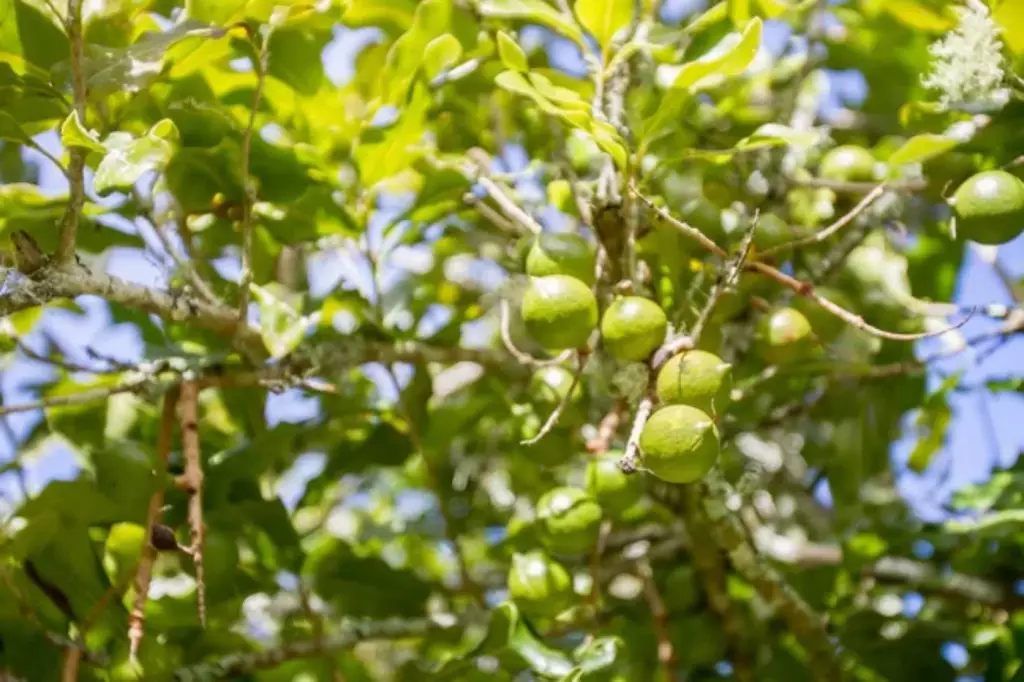
They have a moderate size at maturity
At maturity, Macadamia tetraphylla can reach a height of about 20–30 feet. This moderate size makes it a suitable option for orchards in cooler regions, where it can provide a balance between productivity and resilience to colder weather.
Growth Stages of Macadamia Trees
Macadamia trees go through four stages of growth: seedling, juvenile, immature, and mature.
During the seedling stage, the tree is still developing its root system and leaves. The juvenile stage is when the tree starts to grow taller and develop branches.
The immature stage is when the tree starts to bear fruit, but it is not yet mature enough to produce a full crop. Finally, the mature stage is when the tree is fully grown and can produce a full crop of nuts.
How long do macadamia trees take to grow?
Macadamia trees can take several years to reach maturity and produce nuts. Generally, macadamia trees take between 5 and 7 years to produce nuts, but some varieties can take up to 10 years.
However, the exact time it takes for macadamia trees to grow depends on several factors, including the variety of the tree, the climate, the soil, and the amount of water and sunlight they receive.
Are Macadamia Trees Fast-Growing in Pots?
Macadamia trees are not typically fast-growing in pots compared to being planted in the ground. Macadamia trees are known for their slow to moderate growth rate, regardless of the planting method.
When grown in pots, their growth rate may be further limited due to the restricted root space and the need for regular maintenance.
Their growth in pots is influenced by several factors, including the size of the pot, soil quality, watering, sunlight, and temperature.
Inadequate space for root expansion can restrict the tree's overall growth and development. You may need to use a large enough pot to accommodate the tree's root system and provide proper drainage to prevent waterlogging, which can hinder growth.
Soil quality is also crucial for the growth of macadamia trees in pots. Using a well-draining, nutrient-rich potting mix is important for supporting healthy growth.
Additionally, regular watering is essential to keep the soil consistently moist but not waterlogged. Proper sunlight exposure is also critical, as macadamia trees require full sun for optimal growth.
Temperature can also impact the growth of macadamia trees in pots. These trees thrive in warm climates and may require additional protection or insulation when grown in pots in cooler regions. For more tips on how to easily grow macadamia trees in a pot, you can check out this article.
Macadamia Trees Don't Grow Fast From Seed
After planting a macadamia seed, it can take anywhere from 5 to 12 years for the tree to reach maturity and start producing nuts.
During the early years of growth, macadamia trees require proper care, including regular watering, fertilization, and protection from pests and diseases. You will need to provide young trees with optimal growing conditions to ensure healthy and robust growth.
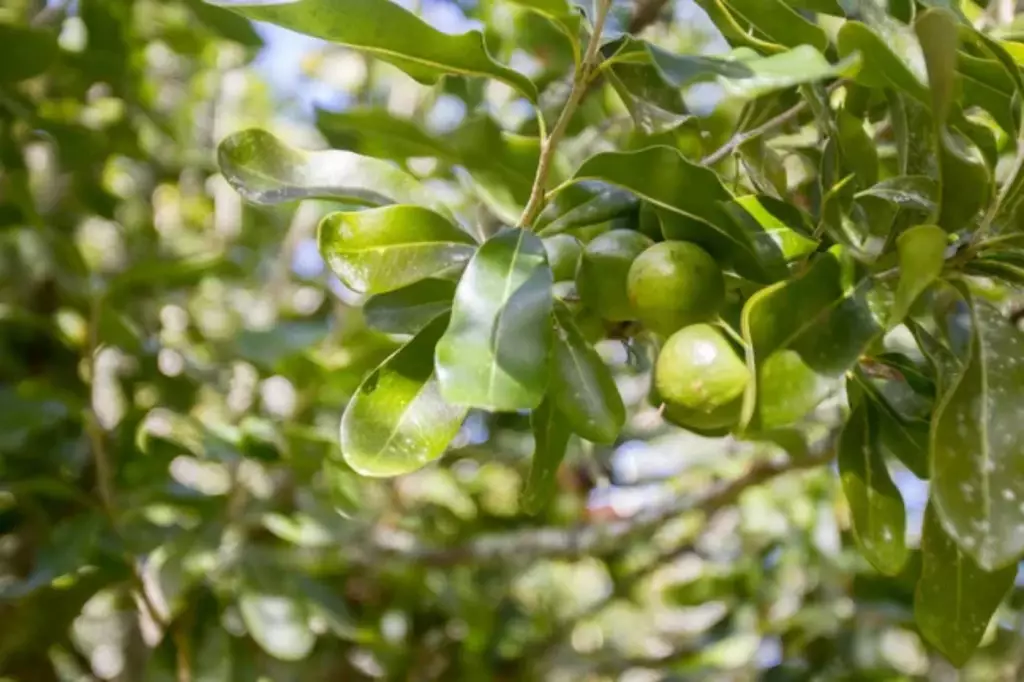
In addition to the time it takes for a macadamia tree to grow from seed to maturity, it's worth noting that the growth rate can also be influenced by the specific variety of macadamia trees. Some varieties may exhibit slightly faster or slower growth rates compared to others.
Factors Affecting Growth Speed
The growth speed of macadamia trees can be influenced by a variety of factors, including the following:
The availability of light
Macadamia trees require ample sunlight for photosynthesis, the process by which they convert light energy into chemical energy to fuel their growth. Therefore, planting macadamia trees in areas with sufficient sunlight is crucial for their optimal growth speed.
The soil conditions
While water is essential for the tree's growth, the soil must be well-drained. Macadamia trees thrive in well-drained soil to prevent waterlogging, which can hinder their growth.
Adequate soil drainage ensures that the roots have access to the right balance of water and oxygen, promoting healthy growth.
The quality of the soil is also a significant factor affecting the growth speed of macadamia trees. It should be rich in nutrients to support the tree's nutritional needs.
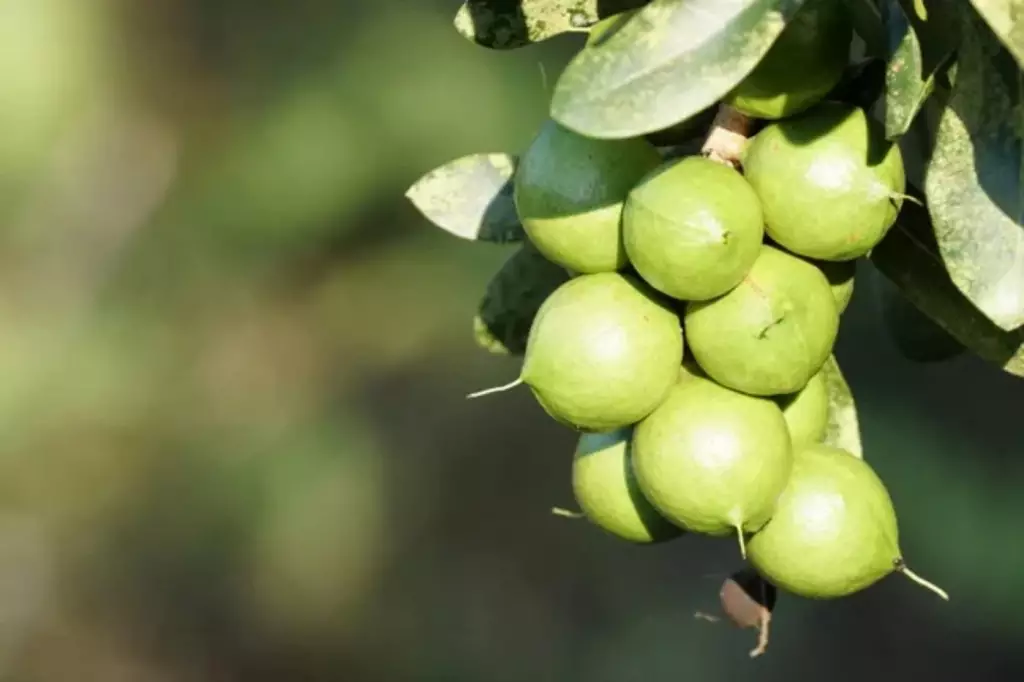
Additionally, regular fertilization can further enhance the soil's nutrient content, providing essential elements for the tree's growth and development.
Environmental factors such as temperature and humidity
These trees generally thrive in moderate climates, and extreme temperatures or humidity levels can affect their growth. Therefore, planting macadamia trees in areas with a moderate climate can help optimize their growth speed.
